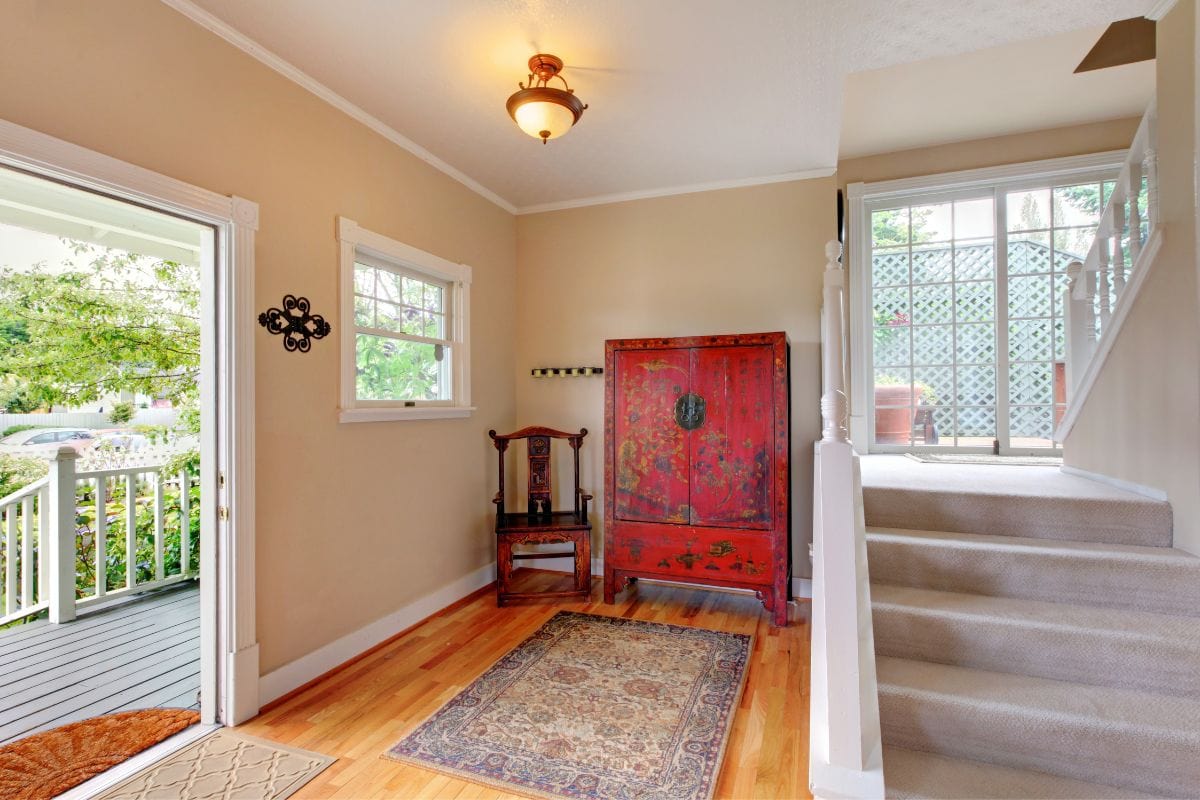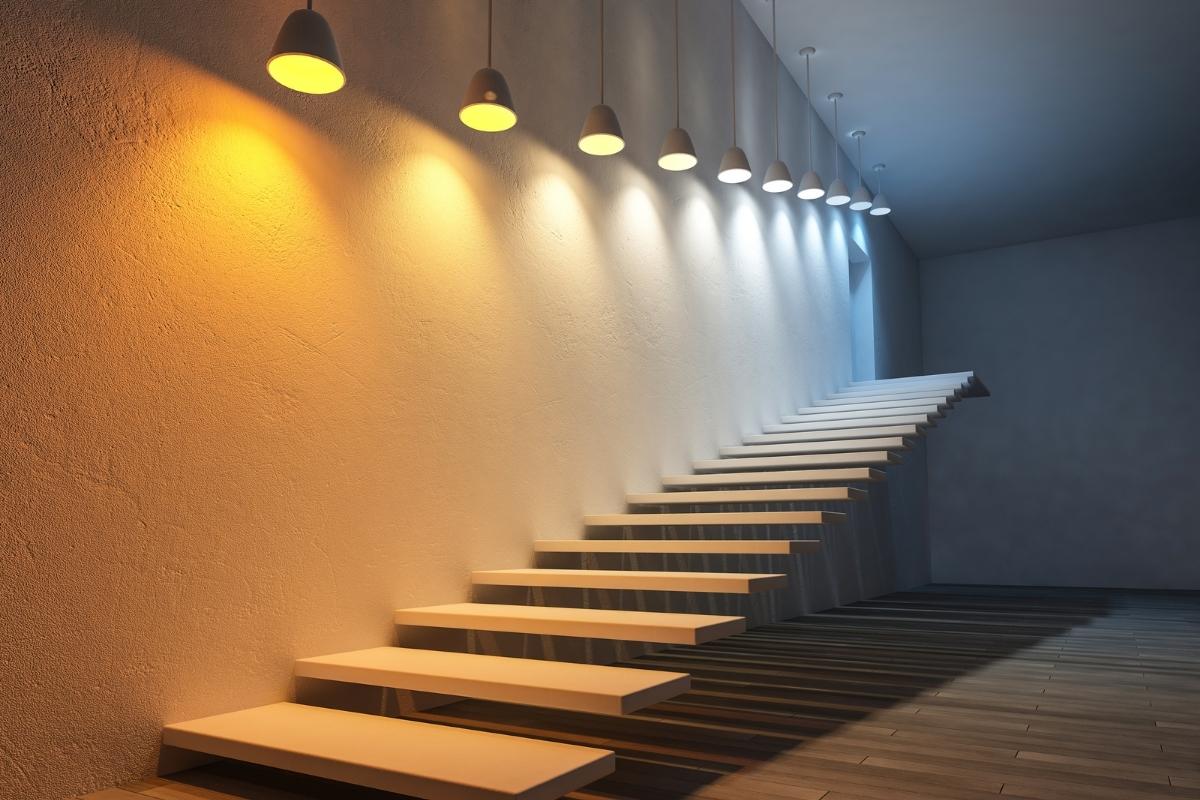Although hallways are not somewhere we spend much time, they should be light to allow us to move safely around our homes. Moreover, no one would like to move from a bright and cozy family room to a dark and unappealing hallway. When it comes to creating an atmosphere of warmth, comfort, and style, focus on lighting because it is a powerful tool. It is essential, especially in hallways where natural light is often insufficient, so apply lights up and down and all over the space to bring the entry area to life.
Consider carefully the type of lighting and the fixtures as they should fit the dimensions of the area to achieve a well-lit, functional, and eye-appealing space.
In a hallway, tracks, sconces, and recessed lighting could be successfully applied as sources of general and accent illumination. Always consider using dimmers. They are a tool that could immediately set a suitable mood.
Track Lighting
Track lighting is elegant and practical, and it adds a modern look to hallways. This style is ideal for long hallways because it could provide sufficient light for the entire length of the walkway without being too intrusive.
Fixtures could be adjusted to illuminate dark corners and even doorways. Placing some of your hallway lighting high on the walls with the light directed downwards adds flair to the décor and makes the hallway area look more open. Halogen tracks are great when applied to focus attention on collections used as wall decoration, especially in high-ceiling hallways. Apply a dimmer to control the brightness throughout the area.
Recessed Lighting
Recessed lighting is ideal for hallways with low ceilings. Recessed light fixtures are simple and keep any room looking fresh and uncluttered. They could be applied both as a source of general lighting and to highlight collectibles used as wall décor. Moreover, recessed lights lack the hardware that accompanies other lighting ideas, so they may help the room appear larger.
It might be useful to remind the lighting formula (L x W) x 1.5 to get the wattage for the space, which means that a hallway ten feet long and four feet wide is 40 square feet, times 1.5 to get the wattage means you need a minimum of 60 watts to properly light the space. Therefore, if each recessed light fixture gives off 20 watts, you need a minimum of three fixtures spaced out through the length of the hallway.
Wall Sconces
Wall sconces are a great option because they can offer light in an attractive, soft way to complement other fixtures and serve accent lighting needs of enhancing the existing wall décor, especially in long hallways. You should keep to hanging sconces roughly at least 60″ from the floor, spaced about eight to ten feet apart along the wall for safety reasons.
Consider using a dimmer to adjust the sconces at night so that there is just a hint of light, but enough to navigate safely. When possible, use sconces that match the style of any pendant or chandelier used in the foyer or entryway to add continuity to your overall lighting and decorating design.
Hanging Fixtures
A fabulous chandelier or a striking etched glass pendant is a perfect option to illuminate foyers, and both could add instant drama and charm to your entranceway and twinkle with a soft, welcoming glow.
The first to consider when choosing the fixture is its size. Smaller foyers look better with a smaller fixture. For larger spaces, you should install a larger one. The general rule here is to add together the length and width dimensions of the space to determine the diameter of the fixture, e.g., an area 14 feet by 16 feet needs a chandelier with a diameter of about 30″ in width.
Keep in mind that the bottom of the chandelier should be at least seven feet from the floor. Remember also that a foyer chandelier should always be hung in the center of the space as well as that for a more balanced look, the higher the ceiling the taller the foyer chandelier should be. If you have a second story viewing, consider how the fixture will look from above.
If foyer fixtures do not illuminate the entire stairway, for safety reasons, install additional fixtures such as recessed stair lights or mini-lights, as stairs should be lit from top to bottom. Add 3-way switches at both ends so that it is convenient to turn off the light that is no longer needed.
It is also a good idea to install a light switch near the front door too, so you will not have to enter a dark house. Also consider adding motion sensor switches for more convenience.
Use LEDs
Consider using LEDs, which are safer than CFLs. Compact fluorescent lights contain mercury which is a hazardous material that has been linked to birth defects, brain damage, and other conditions. LED lights are also more energy-efficient and will last many times longer.
So, be bold and creative. With some professional help and advice, you can make the entry space of your home a showcase. Then you will smile every time on entering your personal castle, not to mention that this visually beautiful area will be a great place to welcome your guests.









